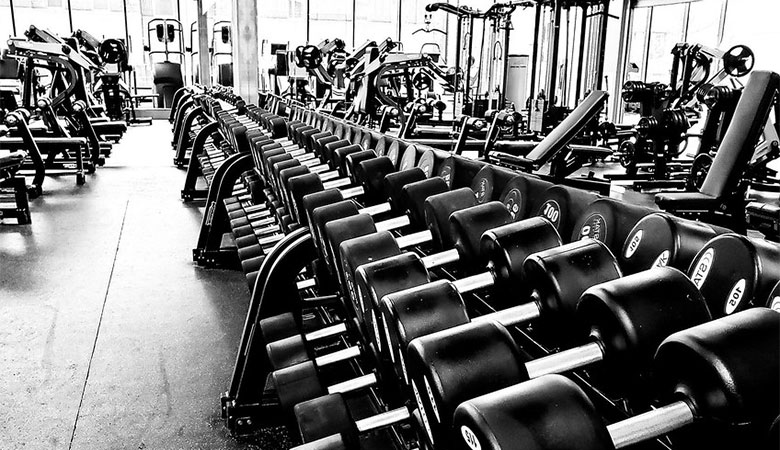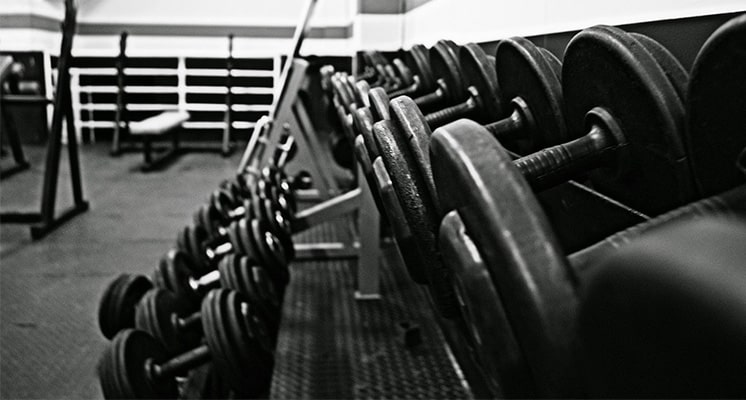
One of the most frustrating things we lifters can experience is getting back to lifting weights after a long break. Maybe you got injured, had a health problem, hectic schedule, work or family issues, loss of motivation or some other thing that forced you to layoff on your training for a while. No matter what it was, getting back to lifting again is hard, both mentally and physically.
Taking a long break from training is something that I’ve had to do twice by now, and it always feel like it’s going to be such an uphill battle once I get back into the gym. But, I’ve found some mental as well as some physical tricks that really help me comeback quicker in the gym and also feel better while doing so. In this post I will share these things with you!
Table of Contents
The Power of Muscle Memory

If you have been training for a while and become de-trained by taking a long lay-off from lifting, then I have some very good news for you. These good news are called muscle memory.
Here’s how muscle memory works:
During the time you lifted weights and got stronger and more muscular you forced a bunch of physiological adaptations to take place in your body. These are one; neurological adaptations and two; muscular adapataions.
Neurological adaptation
The first one is the neurological adaptation, this is your nervous system’s ability to recruite muscle fibers to express greater levels of strength. If you’ve been strength training a lot earlier in your life, your nervous system has learned to recruit muscle fibers very effectively, which is part of the reason why you’ve gotten stronger.
Now sure, this nervous system efficiency will be lost when you’re not training, but it’s been shown that you will get it back a lot quicker than what it took you to build it in the first place. This means that you have the ability to regain a lot of strength fairly quickly once you come back from a lay-off.
Awesome, your neurological adaptations seems to come back fairly quickly after a layoff. But, what about your…
Muscular adaptation
Muscular adaptation is your body’s response in building your actual muscle fibers in order to promote greater strength or muscular endurance. The good news is that your body seems to be VERY capable at restoring your previous level of muscle mass once you return from a layoff.
When you trained before your layoff you increased your numbers of myo-nuclei within your muscles. What’s awesome about these myo-nuclei is that they stay in your muscles far longer than what your actual muscle tissue do, ready to return it to the previous condition once the training continues.
Knowing that both your strength and level of muscle mass has the ability to come back far quicker than what it took you to build it in the beginning is a huge mental relief for someone who have experienced a longer layoff from training.
So, do yourself a favour and keep “muscle memory” in the back of your mind as you step into the gym after your break. Now, with that said, here are three good tips to follow as you return to the gym after a long break:
3 Tips For Getting Back to Lifting After a Long Break

1. Accept That You Will Feel Weaker For a While
Unfortunately, taking some time off from lifting means that you will lose some of your abilities. Now, this doesn’t mean that you’ll never be able to get back to the same level or even surpass it. All I’m saying is that you may start lifting lower weights or the same weight but for fewer reps than what you did before taking the break. This is completely normal.
After 1-2 weeks away from the gym you might not really see or feel much of a difference, simply because our bodies are fairly good at keeping our adaptations for around 2 weeks. However, at around 2-4 weeks away from the gym you will likely start to see some lean muscle loss. So, if you’ve been away from the gym longer than 3-4 weeks, then you must simply accept that you will be weaker for a while.
The good news though is that, just as I explained earlier, you will regain your muscle and strength fairly quickly becuase of muscle memory. How quickly? We will cover that in a moment.
2. Train Fairly Easy in The Beginning
Any time that you return to lifting, or even if you start a new training program, you should ease into your training. This means taking it easy during the first 2-3 weeks. I know that this can feel very challenging mentally since you know how much you used to train. But, believe me on this, easing into your training is very important.
The reason this is important is for several physiological reasons. The first one is that it takes longer for your tendons, joints, and ligaments to recover from your lifting than what it does for your muscles. If you go to hard to early you’re at a much bigger risk of injuring yourself. Imagine how much it would suck getting an injury when you’ve been back for just 1-2 weeks.
The second reason for easing into your training is to avoid excessive soreness. Contrarily to what most people believe, soreness isn’t a good indicator of whether you’ve had a good workout or not. Soreness is more an indicator that you’re doing something that you haven’t done in a while.
Avoiding excessive soreness will first and foremost make it easier for you to return to the gym again for your next workouts. If you feel to sore, it’s very likely that you won’t feel like training more that week.
But secondly and more importantly, becoming to sore has actually been shown in research to be negative for gains. Too much soreness is often a sign of high muscle damage (small micro traumas of the trained muscles), now even though muscle damage is believed to be one of the factors that leads to muscle growth, excessive muscle damage does not!
If you achieve excessive muscle damage (by training too hard too early), your body will only be able to recover the damage caused to your muscles, but not be able to make the muscle bigger and stronger.
If you ease into your training you will keep muscle damage to a moderate level and in doing so more quickly get back to your previous performance, and then surpass it!
If you’re interested in the sciece of soreness I recommend reading this epic post on Stronger by Science.
How to ease into your training
The way you ease into your training is done by doing considerably less training volume and intensity than what you did when you were at your peak.
My recommendation is to cut the number of sets in half and use weights that are 10-20 % below what you used to train with, even less if you’ve been away for a long time. Do this for the first week, and then slowly add in more sets and weight as the weeks progress. Within 4-6 weeks you will most likely be back to your previous performance, or even surpass it!
3. Be Patient
This is probably the MOST important takeaway from this list of tips, as being patient ties into the other two. I understand that it can be very difficult coming back to the gym knowing that you’re not lifting as heavy as you used to, and on top of that needing to take it easy for a few weeks.
But, if you trust the process and also trust that as long as you are consistent and continue doing your workouts, you will return to normal within a few weeks.
Again, don’t try to push yourself immediately from the get-go as this will, as I said earlier, only increase your risk of injury and also reduce your rate of gains.
Remember, if you get injured, you’ll find yourself spending even more time out of the gym.
How Long Will it Take to Build my Muscle And Strength Back?
The time it will take you to build back the muscle and strength you once had depends on a few factors, such as how much muscle mass you had in the past and how much you have lost, how you set up your diet, and of course, how you’re training.
If for instance someone only worked out for two months before the break and achieved little added muscle mass, they would obviously only have muscle memory for that specific amount added muscle mass. On the other hand, if someone had worked out for three years before the break, their muscle memory would stretch far longer, and their potential for growth would be much higher.
An interesting point regarding de-training is that it takes far longer for someone who have trained for a long time to lose their adaptations. It’s been shown that a beginner who have hold on to new muscle tissue for let’s say 1-2 months will lose that muscle very quickly, while an advanced trainee who have hold on to new muscle tissue for years will lose muscle much more slowly during a layoff.
